Welcome to another edition of Willoughby Hills!
This newsletter explores topics like history, culture, work, urbanism, transportation, travel, agriculture, self-sufficiency, and more.
If you like what you’re reading, you can sign up for a free subscription to have this newsletter delivered to your inbox every Wednesday and Sunday and get my latest podcast episodes:
When we bought our house almost 15 years ago, the yard had two crabapple trees in it. At least, I think that’s what they are. They are the shape and size of apple trees, although the fruit they produce are tiny berries that don’t seem edible. Getting the taxonomy perfect is a bit irrelevant though. What matters is that these trees were always the most beautiful in our yard.
We got married in our backyard at an arbor that we installed under one of the crabapples. Its branches formed a cozy embrace from nature over our homemade altar, or at least that’s how it felt. In reality, the crabapple was just stretching to grab some extra sunlight from under the shade of the large sugar maples, which I would tap years later for syrup.
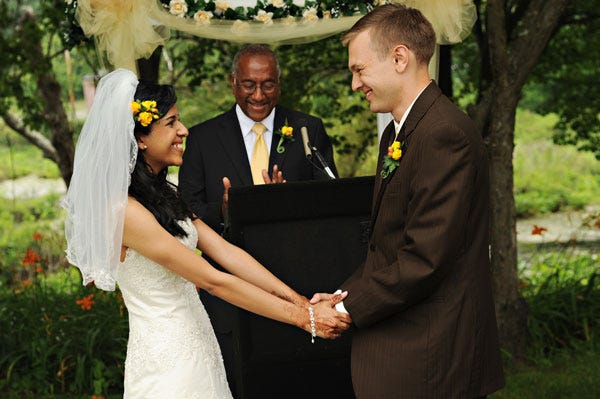
One of those trees finally died a few years ago and I had to cut it down. I burned the last of its branches in our maple syrup fires this year. The other is still with us, but barely.
Every spring, the surviving tree starts out with a beautiful burst of pink flowers, but by the summer, it’s always dropping leaves. For the past three or four years, there are two main leads that haven’t flowered or leafed out at all. This year, I noticed the bark was starting to peel off of those branches, which is never a good sign.
Still, I can’t bring myself to cut it down. There are two branches that flower pretty spectacularly, but perhaps more importantly, this tree provides my family with a special treat every spring: it seems to have become a feeding point for migrating Baltimore orioles.
I first began to notice the birds several years ago. I would see rustling in the flowers and leaves from our kitchen window and then their bright orange bodies became visible, but only for a moment or two.
I thought they might live in the nearby forest and didn’t think much of it. Time would pass and I wouldn’t see them again, only to one day have them reappear in our tree.
At that point, I still hadn’t made the connection that it was a springtime occurrence. I only knew that on occasion, an oriole or two would manifest in our crabapple for a brief time. It was a lovely surprise when it happened, but it took some observation and recollection to begin to realize that there was a distinct oriole season in our yard and that it lasted about a week when the crabapples were in peak bloom.
The study of the nature around us was not a conscious act per se, it was just something that happened the longer that we lived in our house and the more that we watched our surroundings.
I can still remember the distinct moment when it became clear that we really knew this land. My wife’s uncle was visiting us from Guyana and my wife nonchalantly pointed out a painted turtle sunning itself on a log in the brook behind our house. It was some distance away and blended in with the water. Her uncle was impressed that she could see such a tiny thing, but really she had just learned where to look over the years.
My wife said that interaction reminded her of our honeymoon, part of which was spent in a pretty remote jungle in Costa Rica. We stayed in a comfortable but bare bones resort that required taking a tiny plane to a barely paved airstrip, then riding in the back of a Jeep for another 45 minutes to reach it. Electricity and hot water came from solar panels, and most of the food was picked off nearby fruit trees.
On that trip, we took a guided nature walk with a naturalist who had lived at the resort for many years. He walked us around the grounds of the property and would stop when he heard something. He would look up and immediately spot an exotic bird on a high branch in a faraway tree. We needed binoculars to see what he could see and we marveled at his talents.
It felt a bit predictable like riding the Jungle Cruise at Disneyland, where the guides point out robotic animals that haven’t moved from their spot in 65 years. He seemed to innately know where these rainforest creatures were with little effort, except these weren’t robots bolted to a foundation but live wild animals that could move around at will.
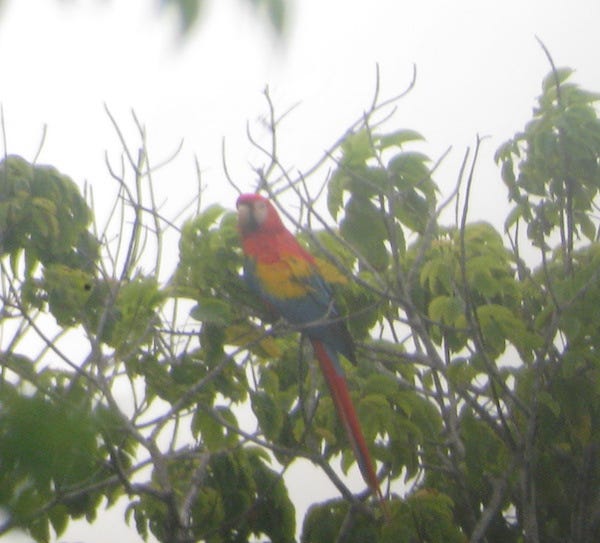
We have become that Costa Rican guide, but for our own little corner of this planet. I now know, for example, that at dusk in March and April, we are often able to spot a beaver swimming in our brook, although the only way to identify it is by the slight wake it leaves in the water, as only its small head is above the surface. As the days get longer and the trees leaf out, the beaver is almost impossible to spot, but it’s there if you look for it in the early spring.
I have learned that great blue herons are most visible in the late spring when they like to frequent our brook to fish and am no longer startled by their loud screech that reminds me of what I imagine a pterodactyl would have sounded like.
And I’ve learned that the Baltimore orioles make a brief appearance for about a week every spring when the crab apple is in full bloom and they won’t be seen again for another 51 weeks.
I was determined to document their migration for posterity last year and set up my DSLR camera on a tripod in the attic window with the longest lens I had. I was able to capture a few photos. I attempted to do the same this year, but had no luck being near my camera at the same time that the birds happened to be feeding.
Our old crab apple reminds me a bit of a rundown roadside diner; a place that becomes enshrined in tradition, even if the stop isn't all that memorable. The ritual of stopping there every time outlives the reputation.
Even if the restaurant begins to lose its shine over the years, the stop still happens out of habit. There are probably better places to go, but that’s your place.
My grandpa always stopped at an Old Country Buffet in Toledo, Ohio that was on the drive between Cleveland and a visit to my grandma’s side of the family in Saginaw, Michigan.
I like to imagine that the orioles feel that way about our little tree. Yes, the quality has gone down over the years and the menu isn’t as expansive as it once was, but it’s a reliable and safe place to stop on the journey. On a trip with hundreds of variables, sometimes its nice to have a little constant.
And so I refuse to take out my chainsaw and do to the tree what probably should have been done three or four years ago. It limps along, not fully dead but hardly thriving, and the orioles that call it home for a few days every spring help keep it alive.
I tell myself I’m keeping it alive for the orioles, but I may be reading more into their dependence on this tree than I should be. After all, those reliable roadside diners do eventually close and people find new options. This country’s highways were once littered with Howard Johnson restaurants, but when those closed, there was a nearby McDonald’s or Subway or KFC there to pick up the slack. I don’t think the orioles would go hungry without my measly little tree, but on the off chance that they might, I like to leave it alone for as long as I can.
I know someday the day will come when I will have no choice but to cut it down. Or perhaps a strong wind will make that decision for me. I’m just hoping to delay that inevitability for as long as I can. Because when the tree is gone, the orioles will be too, and I will need to find another way to mark the coming of spring.
What are your thoughts? I’d love to hear from you in the comments!
Thanks for reading Willoughby Hills! Subscribe for free to receive new posts and support my work.
Related Reading
If you’ve missed past issues of this newsletter, they are available to read here.





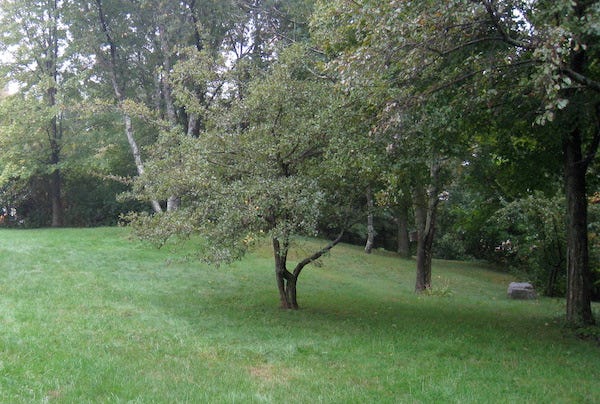
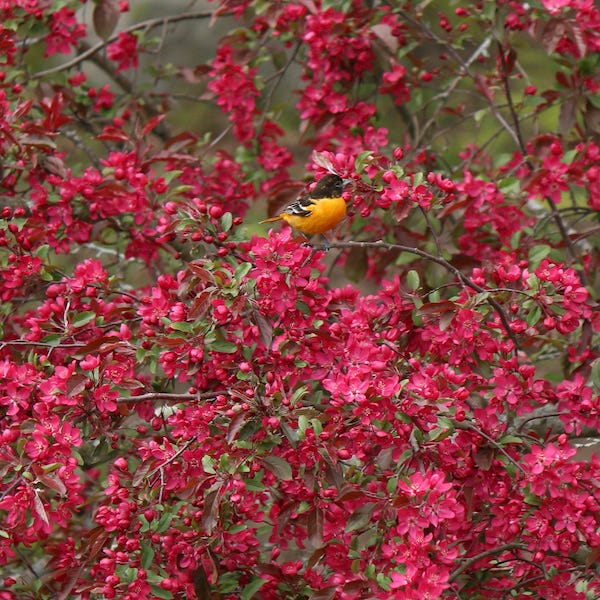
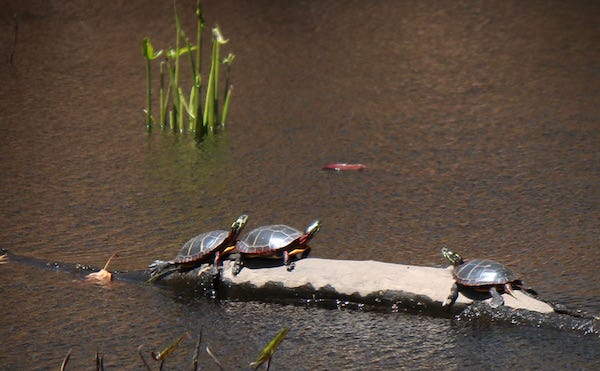
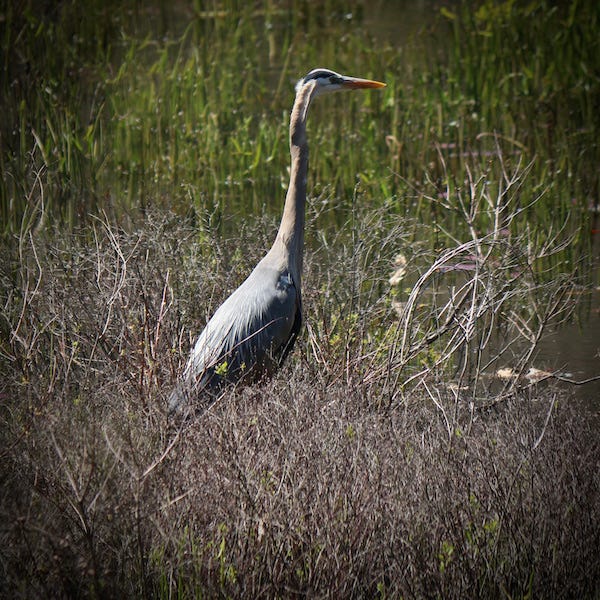
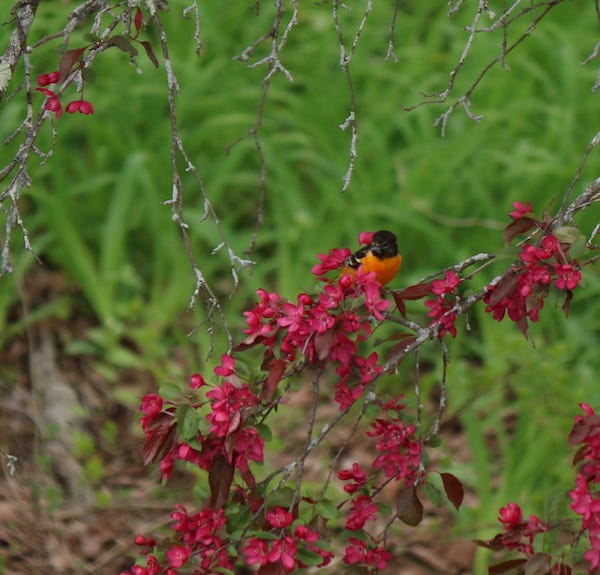
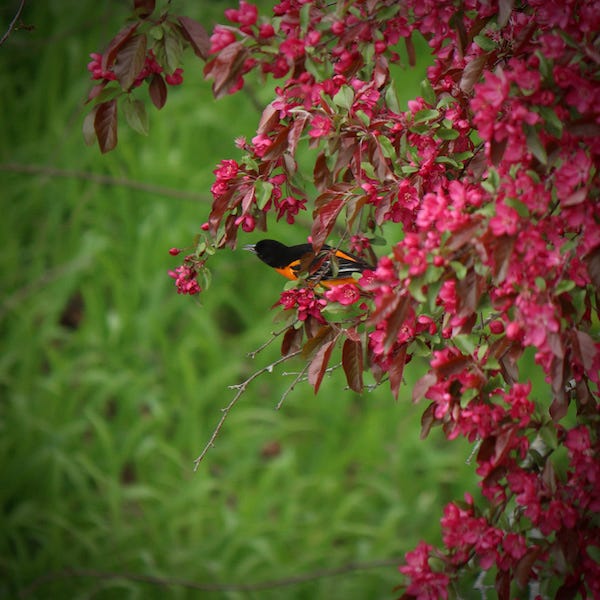
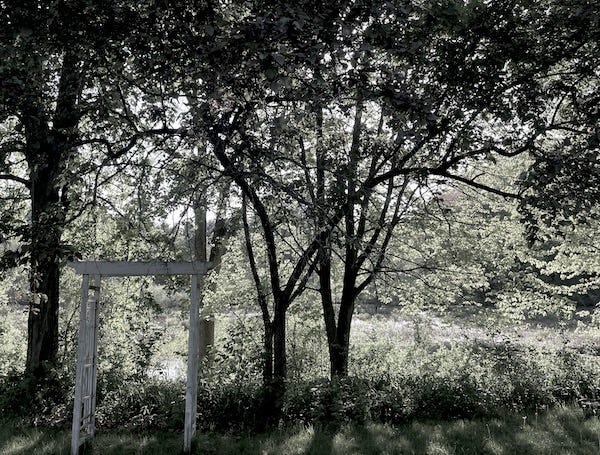
Beautiful piece of writing, and the photos. You're fortunate to live within nature.
You're right about stopping at some old place on a long drive, because it's familiar. Maybe everyone does that, maybe everyone has an old place habit. 😁